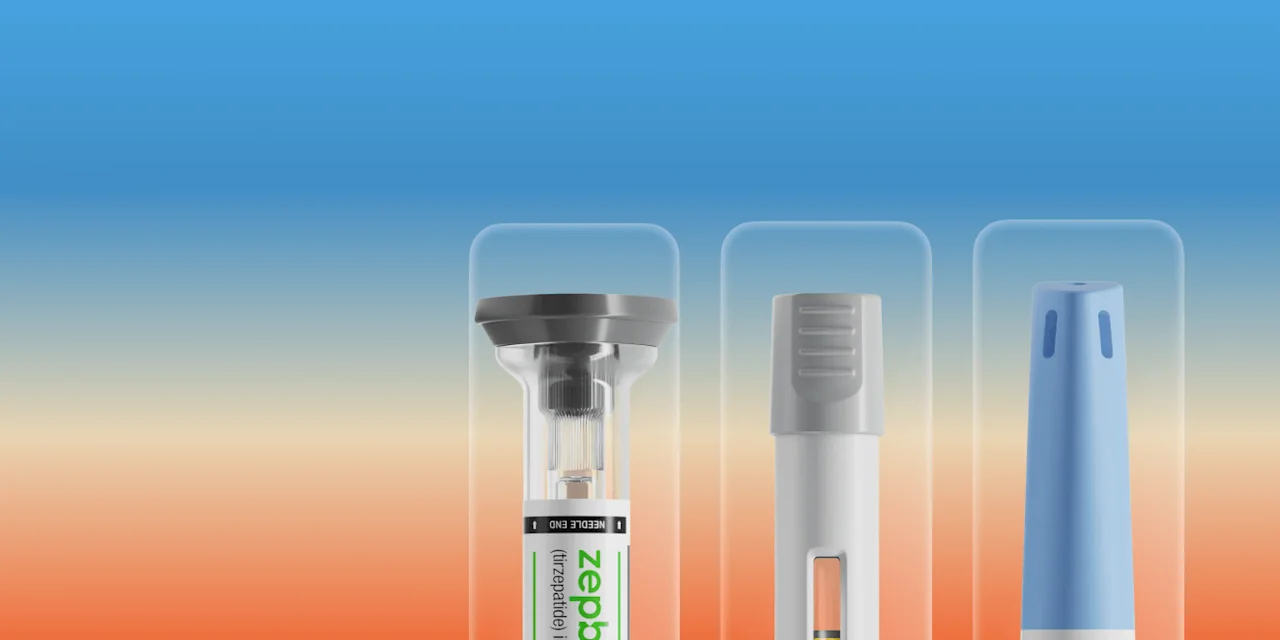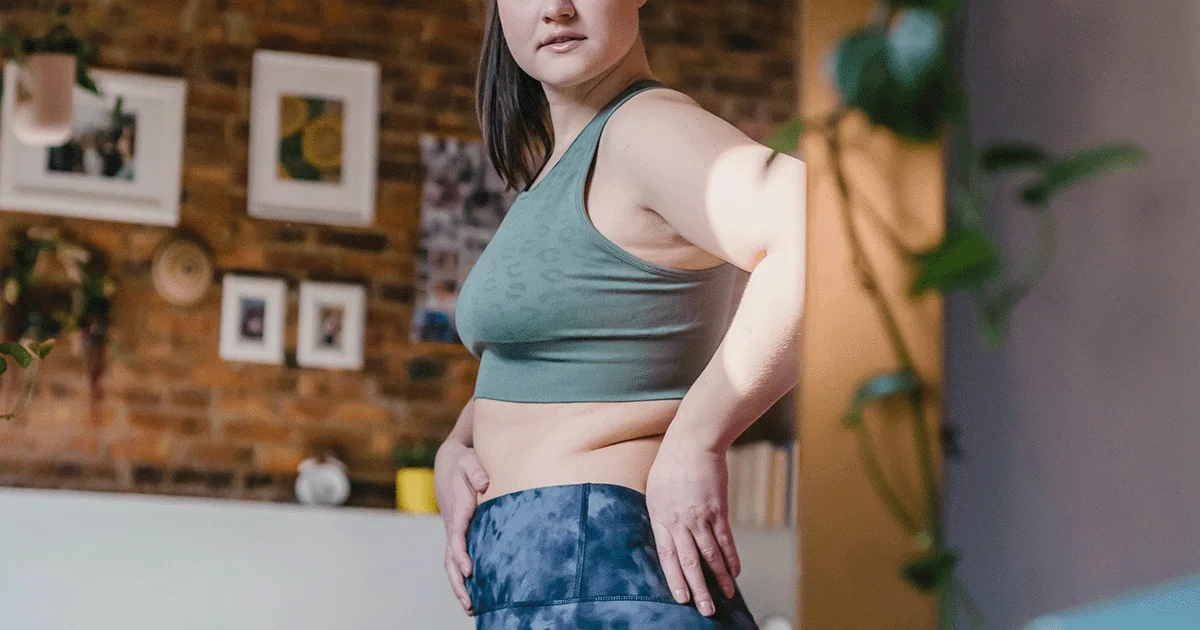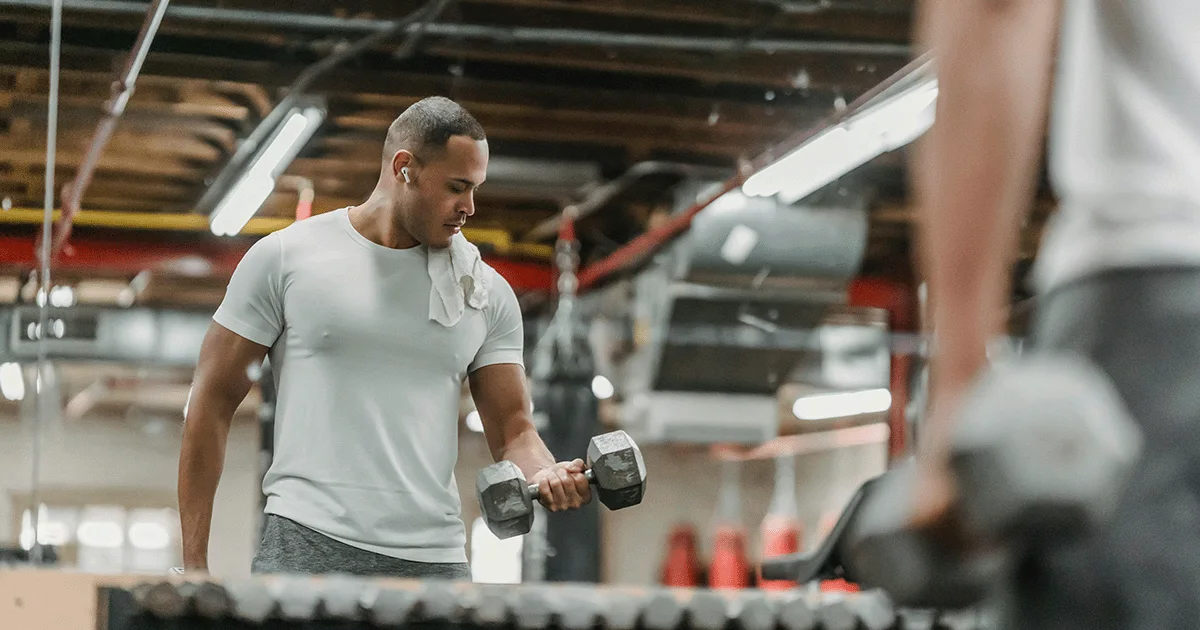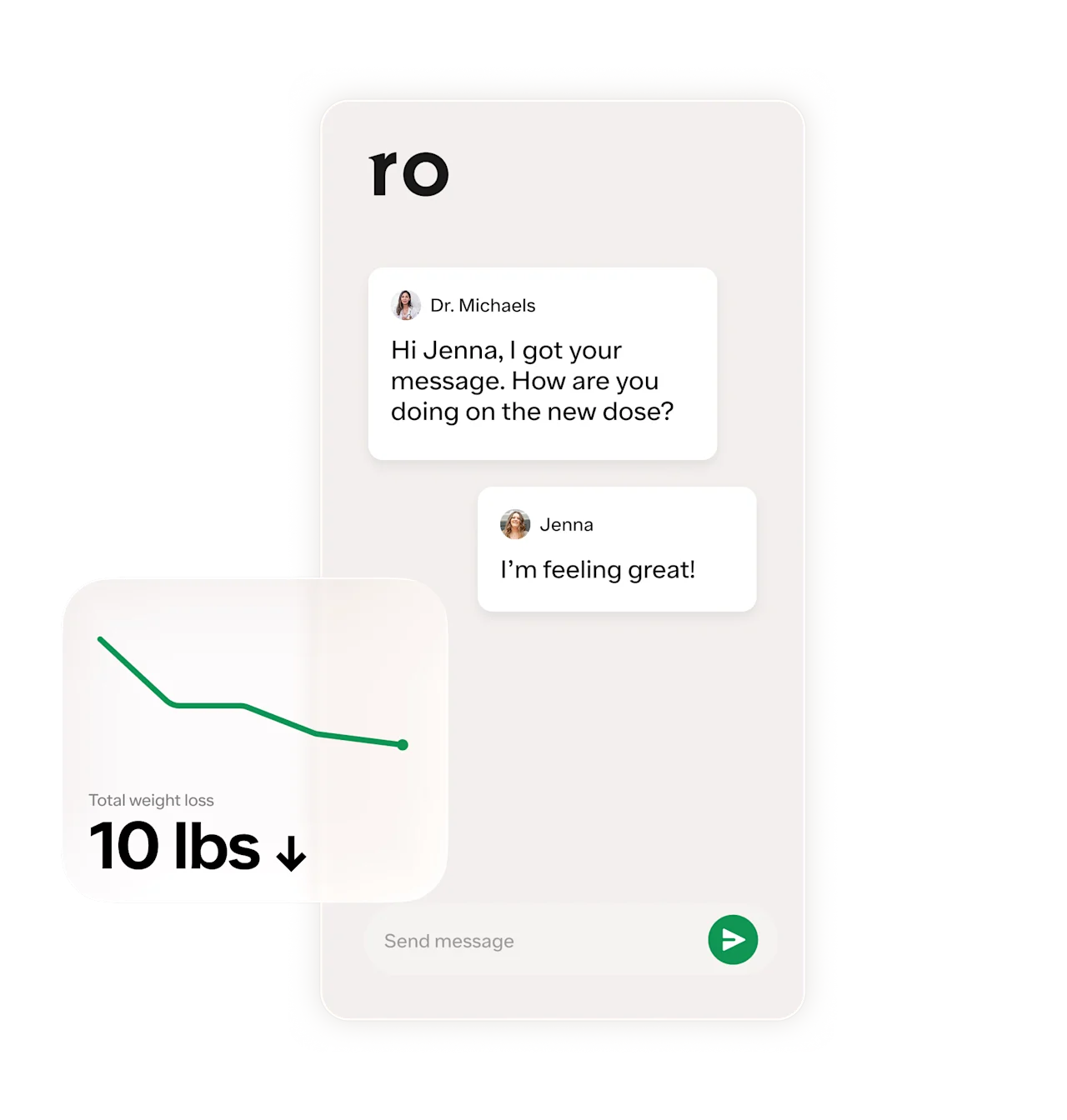Key takeaways
Sweating doesn’t equal fat loss. Any weight lost through sweat is mostly water, not body fat, and it returns once you rehydrate.
You burn calories by moving, not sweating. Calorie burn depends on the type and intensity of activity, not how much you sweat.
Sustainable weight loss requires more than working out. A consistent calorie deficit, balanced nutrition, sleep, stress management, and social support all play critical roles.
Here's what we'll cover
Key takeaways
Sweating doesn’t equal fat loss. Any weight lost through sweat is mostly water, not body fat, and it returns once you rehydrate.
You burn calories by moving, not sweating. Calorie burn depends on the type and intensity of activity, not how much you sweat.
Sustainable weight loss requires more than working out. A consistent calorie deficit, balanced nutrition, sleep, stress management, and social support all play critical roles.
You might be drenched after a good workout, but does sweating help you lose weight? Not in the way many people think. While sweating often occurs during physical activity, the sweat itself doesn't cause fat loss. Instead, the weight you lose directly through sweating is primarily water weight, and it's temporary.
That said, sweating can be a sign that you're exerting yourself physically, which often contributes to calorie burn. And as weight loss is ultimately about maintaining a consistent calorie deficit, exercise plays a key role.
So while sweating doesn’t directly lead to fat loss, it can be part of a larger picture that contributes to it. Here’s the breakdown.
Does sweating help you lose weight?
Short answer: No, sweating alone does not make you lose weight in a sustainable, long-term manner.
Some think sweating is good for weight loss because, in the short term, it can lead to a small drop in body weight. But this is primarily due to fluid loss, not fat loss. The water weight you lose from sweating typically returns as soon as you drink water. (And long-term dehydration is not safe for your body). So, while sweating may make you feel like you're losing weight, it doesn't directly result in fat burn or long-term weight loss.
Sweating is your body’s natural way of cooling itself down. When your internal temperature rises — whether from a workout, a hot climate, or stress — your sweat glands release water and electrolytes onto your skin to help you stay cool.
You might notice a dip on the scale after a sweaty workout, but that’s not an indication of calories burned or fat lost. It’s just temporary water weight loss. For example, a study found that participants lost measurable body mass due to fluid loss after two 10-minute sessions in a dry sauna. This weight reduction was due to dehydration, though, not fat loss, and returned quickly.
To actually lose body fat sustainably, you need to create a calorie deficit (burning more calories than you take in). While physical activity that causes sweating may contribute to this deficit, sweating alone will not cause meaningful and lasting weight loss.
How many calories does sweating burn?
Technically, sweating doesn’t burn calories — movement does. Your body sweats to cool down during physical exertion, but it’s the activity causing the exertion that leads to calorie burn, not the sweat itself.
Over time, regular exercise can also boost your muscle mass. Muscle contributes to increasing metabolism more than fat, so building muscle can increase your total daily energy expenditure, which is how many calories you burn daily.
Does sweating more mean you’re burning more calories?
Not necessarily. The amount you sweat doesn’t directly reflect how many calories you’re burning. Sweat is your body’s way of cooling itself down, not a measure of effort or fat burn.
Some people sweat more than others because of factors like environment and sex. Fitness level also plays a role: Trained athletes tend to start sweating earlier and more heavily during exercise. That’s because their bodies are more efficient at regulating temperature.
On the flip side, someone can do an intense workout in a cool environment and sweat less, but still burn plenty of calories. In fact, cold environments may even boost calorie burn slightly, as the body works harder to stay warm. So while sweat can signal effort, it's not a reliable indicator of how many calories or how much fat you're actually burning.
What are the benefits of sweating?
Sweating isn’t a magic ticket to sustainable weight loss. But it does serve important purposes for your health. Here are some of the key benefits of breaking a sweat:
Helps regulate body temperature: Sweating is your body’s built-in cooling system. When your core temperature rises, sweat glands release fluid onto your skin. As this moisture evaporates, it helps cool you down and prevent overheating, which is especially important during prolonged or intense physical activity.
Removes small amounts of toxins: While sweat isn’t your body’s primary detox system, research suggests it can help excrete small amounts of heavy metals like lead, nickel, and arsenic.
May support skin health: Research suggests that regular physical activity may improve your skin’s ability to stay hydrated. One study found that people with higher activity levels had better skin moisture, which might mean sweating regularly could prevent dryness over time.
Are there risks to sweating?
Yes, especially excessive or prolonged sweating without proper hydration. Key risks include:
Dehydration: Fluid loss can lead to dizziness, fatigue, and headaches. Extreme dehydration can even lead to organ dysfunction and life-threatening electrolyte imbalances.
Impaired nerve and muscle function: Losing too many electrolytes through your sweat (like sodium and potassium) can temporarily disrupt nerve and muscle function. This can cause symptoms like cramping and weakness.
Heat exhaustion or heat stroke: Too much sweating — often in hot, humid conditions or when you're dehydrated — can lead to heat-related illness. This can cause symptoms like swelling, heat rash, muscle cramps, nausea, vomiting, irritability, headaches, and in severe cases, organ problems.
Why do some people sweat more than others?
Some people sweat more than others due to a combination of factors, including genetics, fitness level, the surrounding environment, and their body type. Here’s the breakdown:
Genetics: Your genes contribute to conditions like hyperhidrosis, which causes excessive sweating even without heat or exertion.
Fitness level: Athletes typically start sweating sooner and more excessively than non-athletes, as their bodies regulate temperature more efficiently.
Environment: Hot, humid conditions make it harder for sweat to evaporate, so your body produces more of it to cool you down. In contrast, cooler or drier environments typically lead to less sweating.
Sex and body size: Biological males and those with larger bodies usually sweat more because of increased heat generated through physical activity.
How to burn calories safely
Sweating aside, calorie burn is essential for weight loss. While a common rule of thumb says you need a 3,500-calorie deficit to lose one pound of fat, research suggests the process is more complex.
As you lose weight, your metabolism gradually slows as your body becomes more energy-efficient, meaning you burn fewer calories overall. As a result, you may have to create an even bigger calorie deficit to drop more pounds as you progress in your weight loss journey. Still, creating a consistent calorie deficit through activity and nutrition is key. Regular check-ins with a healthcare provider or dietitian can help make sure your body is getting the nutrition it needs.
To burn calories safely and effectively, try the following:
Engage in regular cardiovascular exercise: Activities like walking, biking, swimming, or high-intensity interval training (HIIT) can raise your heart rate and burn calories.
Strength train: Muscle tissue burns more calories at rest. Building muscle supports long-term weight management.
Increase non-exercise activity: Small movements like walking while on calls or taking the stairs add up throughout the day.
How to lose weight safely and sustainably
Burning calories through exercise is an important component of weight loss, but it’s only part of the equation. To lose weight in a healthy, sustainable way:
Follow a balanced diet: Focus on a nutrient-rich diet that supports a calorie deficit without deprivation.
Get adequate sleep: Research shows that poor sleep can mess with the hormones that regulate your hunger and appetite. This can make it more difficult to lose weight. Aim to get seven to nine hours of consistent, quality sleep per night.
Manage stress: Chronic stress can also contribute to hormonal changes that hinder fat loss. Strategies like mindfulness meditation, exercise, and breathing exercises can all help.
Consider prescription medications: Medications like Ozempic or Wegovy can help with chronic weight management when combined with lifestyle changes. Check with your healthcare provider to see if one of these medications would be appropriate for you.
Bottom line
Sweating can be a signal that your body is working hard, but it's not a shortcut to fat loss. Your daily habits are the keys to sustainable weight loss. Here's what to remember:
Sweating doesn’t burn fat: Sweat is your body’s way of cooling down when you’re overheated from exercise or a hot environment. It’s not a measure of how much fat you're burning.
Water weight is temporary: The weight you lose through sweating is mostly water and electrolytes, not fat. You’ll regain it once you rehydrate, which is essential for performance and safety.
Calorie burn depends on activity, not sweat: The number of calories you burn is driven by the intensity, duration, and type of movement you do, not how much you sweat.
Long-term weight loss requires a full-body approach: Sustainable weight loss involves more than just exercise. It includes nutritious eating, regular movement, quality sleep, mental health support, and medications when necessary. These habits work together to help you lose fat and maintain results.
DISCLAIMER
If you have any medical questions or concerns, please talk to your healthcare provider. The articles on Health Guide are underpinned by peer-reviewed research and information drawn from medical societies and governmental agencies. However, they are not a substitute for professional medical advice, diagnosis, or treatment.
Ozempic Important Safety Information: Read more about serious warnings and safety info.
Wegovy Important Safety Information: Read more about serious warnings and safety info.
References
Baker, L. B. (2019). Physiology of sweat gland function: The roles of sweating and sweat composition in human health. Temperature (Austin, Tex.), 6(3), 211–259. doi: 10.1080/23328940.2019.1632145. Retrieved from https://pmc.ncbi.nlm.nih.gov/articles/PMC6773238/
Balfour, J. & Boster, J. (2023). Physical activity and weight loss maintenance. StatPearls. Retrieved from https://www.ncbi.nlm.nih.gov/books/NBK572051/
Cava, E., Yeat, N. C., & Mittendorfer, B. (2017). Preserving healthy muscle during weight loss. Advances in Nutrition (Bethesda, Md.), 8(3), 511–519. doi: 10.3945/an.116.014506. Retrieved from https://www.sciencedirect.com/science/article/pii/S2161831322006810
Cena, H. & Calder, P. C. (2020). Defining a healthy diet: evidence for the role of contemporary dietary patterns in health and disease. Nutrients, 12(2), 334. doi: 10.3390/nu12020334. Retrieved from https://pmc.ncbi.nlm.nih.gov/articles/PMC7071223/
Charlot, K., Faure, C., & Antoine-Jonville, S. (2017). Influence of hot and cold environments on the regulation of energy balance following a single exercise session: a mini-review. Nutrients, 9(6), 592. doi: 10.3390/nu9060592. Retrieved from https://pmc.ncbi.nlm.nih.gov/articles/PMC5490571/
Heshmati, H. M., Luzi, L., Greenway, F. L., & Rebello, C. J. (2023). Editorial: Stress-induced weight changes. Frontiers in Endocrinology, 14, 1209975. doi: 10.3389/fendo.2023.1209975. Retrieved from https://pmc.ncbi.nlm.nih.gov/articles/PMC10241186/
Kuan, W. H., Chen, Y. L., & Liu, C. L. (2022). Excretion of Ni, Pb, Cu, As, and Hg in sweat under two sweating conditions. International Journal of Environmental Research and Public Health, 19(7), 4323. doi: 10.3390/ijerph19074323. Retrieved from https://pmc.ncbi.nlm.nih.gov/articles/PMC8998800/
Leiva, D. F. & Church, B. (2023). Heat illness. StatPearls. Retrieved from https://www.ncbi.nlm.nih.gov/books/NBK553117/
Papatriantafyllou, E., Efthymiou, D., Zoumbaneas, E., et al. (2022). Sleep deprivation: effects on weight loss and weight loss maintenance. Nutrients, 14(8), 1549. doi: 10.3390/nu14081549. Retrieved from https://pmc.ncbi.nlm.nih.gov/articles/PMC9031614/
Podstawski, R., Boraczyński, T., Boraczyński, M., et al. (2014). Sauna-induced body mass loss in young sedentary women and men. The Scientific World Journal, 2014, 307421. doi: 10.1155/2014/307421. Retrieved from https://pmc.ncbi.nlm.nih.gov/articles/PMC4295591/
Ryosuke, O., Yoshie, S., & Hiromi, A. (2021). The association between activity levels and skin moisturising function in adults. Dermatology Reports, 13(1), 8811. doi: 10.4081/dr.2021.8811. Retrieved from https://pmc.ncbi.nlm.nih.gov/articles/PMC8018252/
Simes, B. C., Moore, J. P., Brown, T. C., et al. (2018). Genetic polymorphism analysis of patients with primary hyperhidrosis. Clinical, Cosmetic and Investigational Dermatology, 11, 477–483. doi: 10.2147/CCID.S176842. Retrieved from https://pmc.ncbi.nlm.nih.gov/articles/PMC6187922/
Smith, J. W., Bello, M. L., & Price, F. G. (2021). A case-series observation of sweat rate variability in endurance-trained athletes. Nutrients, 13(6), 1807. doi: 10.3390/nu13061807. Retrieved from https://pmc.ncbi.nlm.nih.gov/articles/PMC8226773/
Taylor, K. & Tripathi, A. K. (2025). Adult dehydration. StatPearls. Retrieved from https://www.ncbi.nlm.nih.gov/books/NBK555956/
Thomas, D. M., Martin, C. K., Lettieri, S., et al. (2013). Can a weight loss of one pound a week be achieved with a 3500-kcal deficit? Commentary on a commonly accepted rule. International Journal of Obesity (2005), 37(12), 1611–1613. doi: 10.1038/ijo.2013.51. Retrieved from https://pmc.ncbi.nlm.nih.gov/articles/PMC4024447/
von Loeffelholz, C. & Birkenfeld, A.L. (2022). Non-exercise activity thermogenesis in human energy homeostasis. Endotext. Retrieved from https://www.ncbi.nlm.nih.gov/books/NBK279077/
Willis, L. H., Slentz, C. A., Bateman, L. A., et al. (2012). Effects of aerobic and/or resistance training on body mass and fat mass in overweight or obese adults. Journal of Applied Physiology, 113(12), 1831–1837. doi: 10.1152/japplphysiol.01370.2011. Retrieved from https://pmc.ncbi.nlm.nih.gov/articles/PMC3544497/
Worthen, M. & Cash, E. (2023). Stress management. StatPearls. Retrieved from https://pubmed.ncbi.nlm.nih.gov/30020672/













